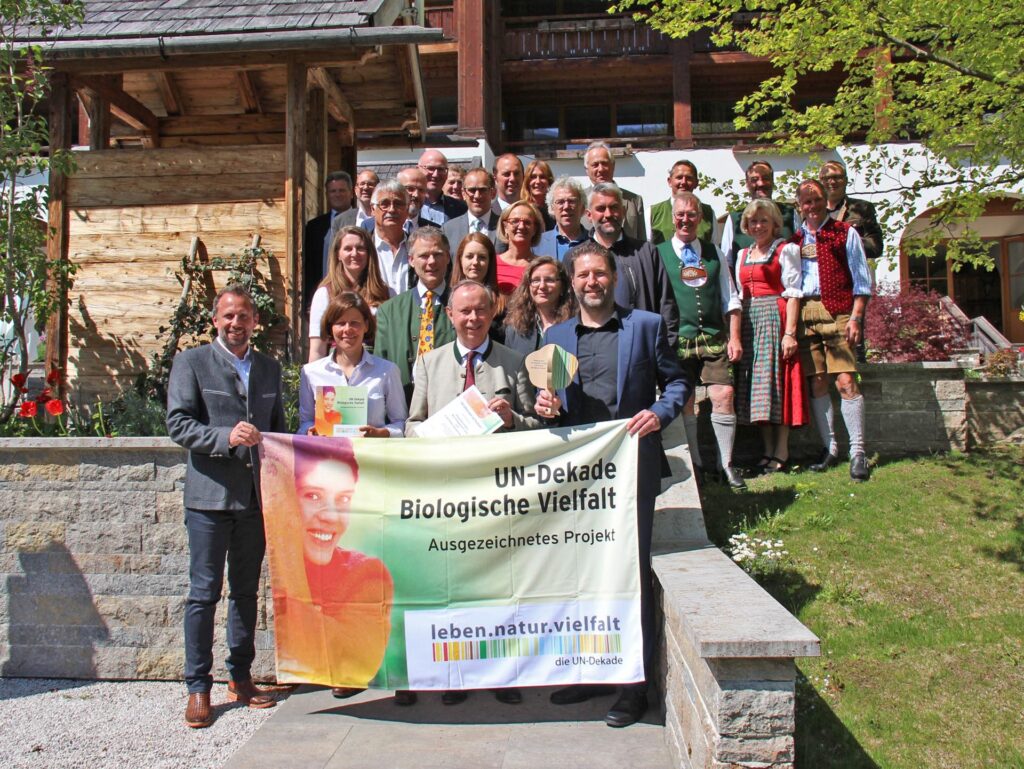Berchtesgadener Land Wild Bee Project
Promoting near-natural and diverse habitats
From the peaks of the Berchtesgaden Alps to the hilly foothills, many rare species of flora and fauna can be found in the local cultural landscape. But no species represents an intact landscape as thoroughly as the wild bee. That is why the protection of their habitats is the focus of the wild bee project – in doing so, we are not only protecting the wild bee, but also numerous other types of animals and plants.

Wild bees need natural and diverse habitats: colorful flower meadows, flowering gardens and orchards, varied landscapes with hedges, trees and edges of forests. Preserving and reproducing the wide range of flowers in the Berchtesgadener Land is the ambitious goal of the wild bee project. This project is a joint initiative of the Berchtesgadener Land Biosphere Region and the National Natural Landscapes e.V., supported by funding from the Allianz insurance company. It is realized in collaboration with many regional actors such as municipalities, associations, schools, companies, farms and private individuals. The UN Decade expert jury was very impressed by these activities and so awarded the Berchtesgadener Land wild bee project a UN Decade Project in 2019.
Wild bee projects
- Creation of a wild bee friendly community area of the fruit and garden club Schönau am Königssee
- Wild bee project of the fruit and gardening association Ramsau
- Compilation of seed bags for species-rich flowering meadows in private gardens
- Creation and maintenance of the biosphere grain garden in Saaldorf-Surheim
- Extraction of the biosphere seeds
- Propagation of wild plants and bee friendly perennials
- Planting of hedges throughout the biosphere by the landscape conservation association
- Creation of a wild bee area with the youth DAV in Laufen
- Design of wild bee friendly fruit tree poles
- Horticultural propagation of wild herbs
- Cooperation project for the creation of an orchard (Obstbaumgartl) in Bad Reichenhall
Die Ergebnisse
auf einen Blick
Mehr als 40 neue Wildbienenhabitate
sind bislang entstanden
Mehr als 2000 Biosphären-Obstbäume
wurden neu gesetzt
Mehr als 3000 m Biosphären-Hecken
wurden bislang gepflanzt

Your contact person
Sabine Pinterits
Landscape ecology and biodiversity